Heerlen 发布时间:2021-10-18
一、人口,面积,所属地区
Country Netherlands
Province Limburg
Area
• Municipality 45.53 km2 (17.58 sq mi)
• Land 45.02 km2 (17.38 sq mi)
• Water 0.51 km2 (0.20 sq mi)
Elevation 113 m (371 ft)
Population (Municipality, January 2019; Urban and Metro, May 2014)
• Municipality 86,832
• Density 1,929/km2 (5,000/sq mi)
• Urban 200,957
• Metro 247,731
Demonym(s) Heerlenaar
Time zone UTC+1 (CET)
• Summer (DST) UTC+2 (CEST)
Heerlen is a city and a municipality in the southeast of the Netherlands. It is the third largest settlement proper in the province of Limburg. Measured as municipality, it is the fourth municipality in the province of Limburg.
Heerlen forms part of the city-region of Parkstad Limburg, an agglomeration with about 250,000 inhabitants and encompassing 8 municipalities. It is to the east of Maastricht and north of the German city of Aachen.
After its early Roman beginnings and a modest medieval period, Heerlen became a centre for the coal mining industry in the Netherlands in the late 19th century. In the 20th century, architect Frits Peutz played a major role in shaping the city as we know it today. His most famous design, and a distinctive building in the city centre, is the so-called Glaspaleis (Glass Palace), listed as one of the world's thousand most architecturally important buildings of the 20th century.
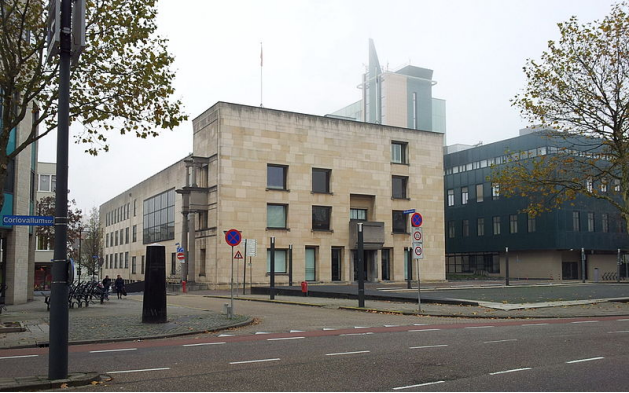
City and Municipality
二、自然地理
Heerlen is located at 50°53′N 5°59′E in the province of Limburg in the southeast of the Netherlands on the border with Germany. It is situated in the COROP region of South Limburg and is part of the agglomeration Parkstad Limburg, formerly known as Oostelijke Mijnstreek.
Heerlen is bordered by the Dutch municipalities of Simpelveld (in the south), Voerendaal and Nuth (west), Schinnen (northwest), Brunssum (north), Landgraaf and Kerkrade (east), and the German municipality of Aachen (southeast).
Heerlen's high elevation makes it one of the highest cities above sea level in the Netherlands.
Transport
Heerlen has four railway stations:
Heerlen
Heerlen de Kissel
Heerlen Woonboulevard
Hoensbroek
From Heerlen one can travel to Eindhoven, Utrecht, Amsterdam, Maastricht/Liège, Kerkrade and towards Aachen/Köln in Germany.
Heerlen
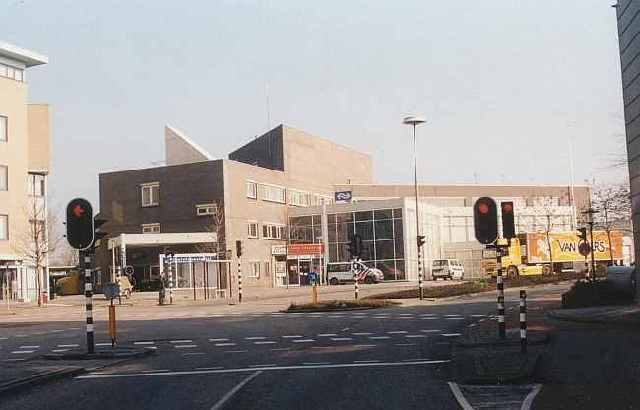
History
The station was opened on 1 May 1896 and is located on the Sittard–Herzogenrath railway and the Heerlen–Schin op Geul railway. The station was an important mining station, until the mines closed down.
As part of the Maankwartier ("Moon Quarter") project, construction of an entirely new train station started in December 2012.
Train services
The following train services call at this station:
Express:
1, Intercity IC 3500: Amsterdam Schipol – Utrecht – Eindhoven – Heerlen
2, Sneltrein RE 18: Aachen – Heerlen – Maastricht
Local:
1, Stoptrein RS15: Sittard – Heerlen – Kerkrade
2, Stoptrein RS18: Maastricht Randwyck – Heerlen
Bus services
The following bus lines serve the bus station north of the railway station:
20: Heerlen Station–Heerlen South–Kunrade–Voerendaal–Voerendaal Station–Retersbeek –Weustenrade–Brommelen]–Swier–Wijnandsrade–Laar–Nuth–Vaesrade–Hoensbroek
21: Brunssum–Hoensbroek–Heerlen Station–Heerlen Hospital–Heerlen South–Kerkrade Stadion–Simpelveld–Eys–Gulpen
22: Heerlen Hospital–Heerlen Station–Landgraaf–Ubach
25: Hoensbroek–Heerlen North–Heerlen Station–Landgraaf–Kerkrade
26: Kerkrade Bus Station–Haanrade–Eygelshoven Markt–Eygelshoven Station–Landgraaf–Heerlen de Kissel Station–Heerlen Station–Hoensbroek
28: Kerkrade South–Kerkrade Station–Kerkrade Bus Station–GaiaPark (Zoo)–Kerkrade Stadion–Heerlen East–Heerlen Station–Heerlen North–Brunssum–Schinveld
29: Kerkrade South–Kerkrade Station–Kerkrade Bus Station–Eygelshoven Markt–Landgraaf–Heerlen Station–Heerlen Molenburg–Kerkrade Stadion
31: Heerlen Station–Beek (School Service)
33: Heerlen Station–Landgraaf–Ubach
36: Heerlen Station–Brunssum–Jabeek–Doenrade–Sittard Station
37: Heerlen Station–Brunssum–Merkelbeek–Doenrade–Sittard Station
40: Heerlen Station–Kunrade–Ubachsberg–Elkenrade–Wijlre–Gulpen
41: Kerkrade Bus Station–GaiaPark (Zoo)–Kerkrade Stadion–Heerlen South–Heerlen Station–Hoensbroek–Amstenrade–Oirsbeek–Doenrade–Sittard Station
43: Heerlen Station–Kerkrade Stadion–Simpelveld–Bocholtz–Nijswiller [nl]–Lemiers–Vaals
44: Heerlen Station–Kerkrade Stadion–Horbach (Germany)–Richterich–Laurensberg–Aachen–Aachen Hauptbahnhof
52: Heerlen Station–Kunrade–Voerendaal–Klimmen–Hulsberg–Arensgenhout–Schimmert–Ulestraten–Meerssen Station
58: Heerlen Station–Nijswiller–Wittem–Gulpen
Heerlen de Kissel
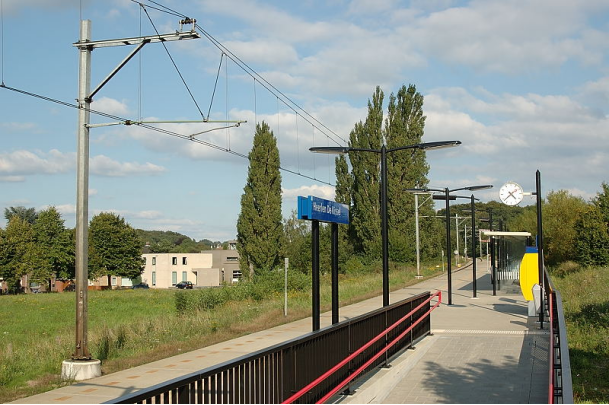
History
The station opened on 9 December 2007. It is located on the Sittard–Herzogenrath railway and is part of the Heuvellandlijn. Train services were operated by Arriva. As of the timetable change in december 2018 the station was closed.
Heerlen Woonboulevard

History
Construction took place in 2010, between 18 January and 3 June, while the station opened on 27 June. The station lies between Voerendaal and Heerlen on the Heerlen–Schin op Geul railway [nl], which is part of the Heuvellandlijn (Maastricht–Heerlen–Kerkrade).
The station was named after the adjacent Woonboulevard Heerlen [nl], a collection of furniture and home decoration shops.
Train services
1, Stoptrein S4: Maastricht–Heerlen
Hoensbroek
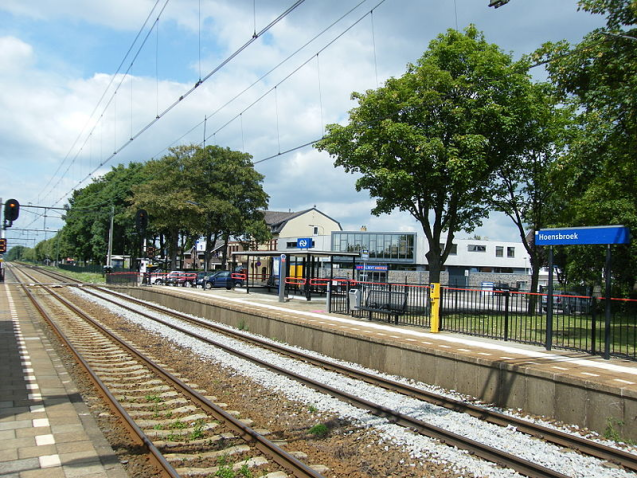
The station was opened in 1896 and is located on the Sittard–Herzogenrath railway. Train services are operated by Arriva.
Train services
Stoptrein: Sittard–Heerlen–Kerkrade
Accessibility Heerlen
-- Connection to the E 314 / A4 international motorway Antwerp / Rotterdam - Cologne / Frankfurt / Stuttgart
-- Highway A76- A2 Heerlen - Eindhoven / Amsterdam/ Venlo / Dusseldorf
-- Highway A79 Heerlen - Maastricht - Luxemburg / Paris Connection to the city highway N281
-- Rail links between Heerlen and Amsterdam / The Hague / Maastricht
-- Light-rail connection to Aachen
-- Maastricht-Aachen airport (NL) 20 KM
-- Liège Airport (B) 35 KM
-- Cologne-Bonn Airport (D) 80 KM
-- Düsseldorf Airport (D) 80 KM
-- Brussels Airport (B) 100 KM
三、经济发展和规模
Heerlen - Economy » GDP (Million USD, Constant Prices, Constant PPP, Base Year 2015)
11,175.00
US dollar in 2015
Though Heerlen GDP (million USD, constant prices, constant PPP, base year 2015) fluctuated substantially in recent years, it tended to increase through 2001 - 2015 period ending at 11,175 US dollar in 2015.
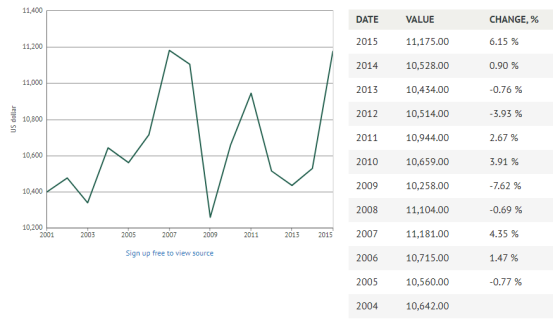
四、产业特点/重点项目
Heerlen houses the biggest furniture strip of Europe, with 120,000 m²floorspace after the opening of the biggest (35,000 m²) IKEA of the Benelux on the 27th of August 2008.
On October 1, 2008, the world's first minewater power station was opened in Heerlen. It will be used to heat and cool 200 homes, along with shops, a supermarket, a library and large office buildings.
Minewater set out to develop a geothermal power station exploiting water in abandoned mines in the town of Heerlen – at the heart of a Dutch coal-mining area that closed its last mine in the 1970s. The objective was to show that such mines offer the potential to supply ‘green’ energy for municipal heating and cooling applications. In addition, it was hoped that this initiative would highlight the associated environmental and employment benefits.
Set up in 2005, the project involves seven European partners including municipalities, building research institutes and housing associations, and has received strong financial support from the EU. The concept was developed by local government energy management coordinator Elianne Demollin-Schneiders, who recognised the geothermal energy potential of the city's mine water. She received the support of the mayor's office in the municipality of Heerlen to implement the pilot project.
Mines
List of mines which were located in what is now Heerlen:
Oranje Nassau I, 1899–1974, now used in the Minewater Project
Oranje Nassau III, 1917–1973, now used in the Minewater Project
Oranje Nassau IV, 1927–1966
Staatsmijn Emma, 1911–1973
International companies
The Heerlen region is home to many international companies as it is situated in the heart of Europe, between Cologne, Brussels and Eindhoven. The proximity of the German and Belgium border make Heerlen an international orientated city, with a multilingual population.
Some international in the Heerlen region:
DSM DM Dyneema Medtronic Ranpak
Doc Morris Kobelco (Kobe Steel) Boston Scientific Exxon Mobil
Mondi packaging CADAC Abbott Vascular Acist
DHL TNT Continental
五、风景名胜,景点
Historical museums
If you have children, take them to the Castle of Hoensbroek. It is a wonderful, small medieval castle with a moat, a bridge, an inner court, a tower with a spiral staircase that leads to a dungeon, and many beautifully decorated rooms that give an impression of living the life of the Count of Hoensbroek.
Heerlen used to be a city of colliers before the coal mines were closed in the early 1970s. You can discover this part of our past in the Dutch Minemuseum (Nederlands Mijnmuseum), a museum located on a former mine. Former colliers can give you a tour around and tell you what work and life was like in those days.
If we go back to the Roman Empire, Heerlen was a small settlement known as Coriovallum. We thank the Roman thermal baths and many other objects for that. You can see them in the Thermenmuseum
1, Brunssummerheide
Features Animals
Nature & Wildlife Areas
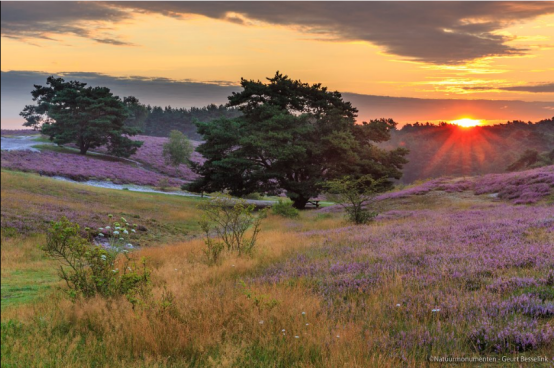
2, Nederlands Mijnmuseum
Specialty Museums, History Museums
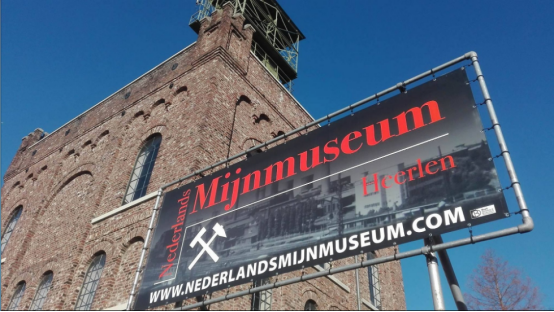
The Dutch Mining Museum is a museum about Dutch coal mining, located in the shaft building (shaft II) of the former Oranje-Nassau mine I.
Address:
Mijnmuseumpad 2 Parkeren: navigeren op CBS-weg, 6412 EX Heerlen The Netherlands
Architecture
The city's best-known architect is Frits Peutz. His legacy consists of at least 10 landmark buildings in Heerlen. In 1935 Heerlen's most famous landmark building, the Glaspaleis, was built next to the medieval church in the centre of the then modest town. It was commissioned by the merchant Peter Schunck and it was quite an extraordinary step for this conservative businessman to ask the young Heerlen-based architect Peutz to design the new Schunck department store. It is one of the most outstanding examples of early Modernism in The Netherlands but it was only recognized as such at a fairly late stage (after it had been badly maimed). In the 1990s it was added to a prestigious list of the world's 1000 most important buildings of the 20th century created by the International Union of Architects (only 13 buildings in the Netherlands are on that list). It encouraged the city administrators to buy the dilapidated building and make plans for its renovation. The renovation has now been completed and it now houses several of the city's cultural institutions, including a museum of modern art. The renovated Glaspaleis has become a symbol of the revived Heerlen after the closing of the coalmines.
Although many interesting buildings were demolished around 1900, some older buildings still exist in the centre of Heerlen, for instance, a Romanesque style 12th-century church (Pancratiuskerk), and a former prison tower from around the same period (Schelmentoren).
Other buildings worth mentioning are a Neoclassical chapel (Grafkapel de Loë built in 1848, the only remaining Neoclassical building in Heerlen), and a former mansion annex pharmacy, left in almost the same state as after its 1801–1828 expansion (Huis de Luijff).
In other parts of Heerlen, especially near the numerous small rivers around Heerlen, many older buildings can be found, noticeably a couple of watermills (like the Weltermolen (14th century), Eikendermolen (15th century), Oliemolen (16th century), and Schandelermolen (17th century)), some castles (for instance Hoensbroek Castle oldest part 1380, Kasteel Terworm 15th century) and old farms (Geleenhof (dating back to Roman days), Benzeraderhof (13th century, Hoeve Den Driesch (14th century), Overste Douvenrade (largely destroyed and rebuilt in 1779) and Hoeve de Bek (1796)).
六、历史文化
In 1997, a habitation from the Michelsberg culture (4400 - 3500 BC) was excavated at the Schelsberg, near Heerlen. Archeological finds from this period are rare in the Netherlands. The site is unique in the Netherlands, as it is the first excavated site with ditches and earth walls (earthworks).
Even with these proofs of early habitation, the history of Heerlen properly starts with the arrival of the Romans. They founded a military settlement, named Coriovallum on the crossroad of two main roads: Boulogne sur Mer - Cologne and Xanten - Aachen - Trier. In Heerlen and its surroundings a lot of evidence of Roman life has been excavated, especially Roman villas (country estates). The most notable archeological excavation from Roman times is the Thermae complex in the centre of Heerlen, a Roman bathhouse, discovered in 1940. In the Netherlands only a few of these have been found. It is a clear indication that Coriovallum/Heerlen was of some importance. A museum has been built over the Thermae and opened in 1977. The Thermenmuseum also houses other Roman finds from the area.
Like many other Roman settlements in the Netherlands, Coriovallum was probably abandoned after the 3rd/4th century Roman retreat. Very little is known about Heerlen's history until the 10th century, when agricultural development continues once again in these parts of Europe. Farmhouses and mills are built across the valleys of Caumerbeek, Schandelerbeek and Geleenbeek and medieval Heerlen slowly takes shape.
The oldest mention of Heerlen (as 'Herle') is in an official document dated 1065. Udo, bishop of Toul, documents some gifts. One of them is the allodium Heerlen, in the bishopry of Liege. Another allodium consists of a few chapels, which belong to the mother church in Voerendaal, close to Heerlen. Shortly after this, the allodium of Heerlen appears to be owned by the counts of Ahr-Hochstaden.
Theoderich van Are (Udo van Toul's cousin) separated Heerlen from Voerendaal and chose Saint Pancratius as the patron saint of the church. The counts of Are where probably responsible for the construction of the Schelmentoren and the St-Pancratius church and also may have ordered the construction of a moated castle. Through these fortifications, Heerlen acquired some rights and freedoms, which gave it an elevated status over the surrounding countryside. Voerendaal, Hoensbroek, Schaesberg en Nieuwenhagen now fell under the legislation of the so-called "Land van Herle".
In 1244 Heerlen came under the authority of the dukes of Brabant, but in 1388, along with Hoensbroek, it was given a separate status. During the Eighty Years' War (1568–1648), Heerlen was disputed by the kingdom of Spain and the Dutch Protestant rebels and swapped sides several times. At the 1661 Partage Treaty, Heerlen became part of "Staat-Limburg", ruled by the States-General of the newly founded Dutch Republic. Being in the border region, close to the Spanish territories, it remained quite isolated until 1793, when the French conquered Heerlen. After the defeat of Napoleon in 1814, it became part of the Netherlands province of Limburg (present-day Dutch and Belgian Limburg). In 1830, like most of Limburg, Heerlen sided with Belgium in the Belgian Revolution. In 1839 however, as a result of an agreement between the main European powers (the London Conference), it became part of the Netherlands again.
In the 19th century, Heerlen, like most of Limburg municipalities (Maastricht was an exception), did not partake in the Industrial Revolution and it remained largely agrarian until coal mining began in the late 19th/early 20th century. In March 1874, coal had been found at the Valkenburgerweg. However, setting up a mine is a risky long-term investment and only very few private enterprises took up the challenge and bought a concession. In 1896 Heerlen got its first railway connection to allow the transportation of coal from these first coal mines. Development was still rather slow: In 1812 Heerlen had a population of 3497, in 1900 this was still only 6646. In 1901, the national government stepped in and bought all remaining unsold concessions and set up the State Mines. In a short period of time several large state-operated coalmines began production. The population rose sharply from 6646 in 1900 to 12,098 in 1910 to 32,263 in 1930. During these early expansion years many old buildings in the centre of Heerlen were demolished. The coalmines remained central to the development of Heerlen into a modern city until the early 1960s, the period during which mayor Van Grunsven was mayor of Heerlen.
The golden years of coal mining ended in the late 1950s, after which production gradually diminished due to competition from cheaper Polish and American coal and the discovery of natural gas in the province of Groningen. In the period 1965–1975 the coal mines were closed altogether. In the area around Heerlen-Kerkrade-Brunssum and Sittard-Geleen 60,000 people lost their jobs. A difficult period of economic re-adjustment started. The Dutch government tried to ease the pain by moving several governmental offices (ABP, CBS) to Heerlen but even today the city has not fully recovered from the loss of tens of thousands of jobs.
In the cityscape of modern-day Heerlen, there are very few reminders of the once omni-present mining industry. Most of the typical mounts of mining debris that surrounded the coal mines have been removed or transformed into green hills during an operation called van zwart naar groen (from black to green). Even the tallest mine chimney of Europe, 'Lange Lies' (tall Liz) and her older brother 'Lange Jan' (tall John), once major landmarks, were demolished. One of the few remaining mining buildings (shaft 2 of the Oranje Nassau I) now houses the Dutch Mine Museum.
七、其他信息
Heerlen has hills, woods, moors and old castles, mills and farms. You can walk or cycle for hours, for instance on the Brunssumerheide. You can easily end up on the German side of this moor and visit a quiet village there. Next to the many bicycle lanes, there are special bicycle routes and shortcuts that lead through parks and green areas in our city.
Culture and art
Lovers of modern art should not miss SCHUNCK* (the former Glasspalace), a museum in the city centre. Next to collections of modern art there are temporary expositions of innovative, avant-garde or urban art. Above all the Glass Palace building itself is an awesome monument designed by Peutz in the 1930s and worth the visit. Closeby SCHUNCK* there is an intimate concert hall, called ‘de Nieuwe Nor’ that offers gigs almost every weekend. Or visit the beautiful medieval church of Pancratius, next to SCHUNCK*. At the Theater Heerlen, one of the largest theatres in the Netherlands, and also designed by Peutz, you can visit theatre shows, musicals, concerts or drama.
Culture in Heerlen
-- Medieval Castle Kasteel Hoensbroek
-- Thermenmuseum (Roman baths)
-- Stadsschouwburg (theatre)
-- Schunck Glaspaleis (Glass Palace, architectural milestone, full of cultural expression
-- Stadsgalerij Heerlen, municipal museum for modern and contemporary art
-- Muziekschool (music school)
Events
Cultura Nova festival offers stunning theatrical shows in the open air and on other unexpected venues. The festival has become famous for its internationally renowned shows or spectacle. There are always lots of smaller musical or art events on the side, also for children. It is yearly held, usually at the end of August. It starts with a grand show that is for free. Don’t miss it if you happen to be nearby Heerlen during that time!
During the International Breakdance Event, Heerlen changes into Hiphop City and bustles with breakdancers from all over the world. On many locations in the city, b-boys and b-girls show their jaw-dropping skills during dance battles. Next to that, there are many other events, please check our calender to see what is on.
Health care
Health care in Heerlen (and the rest of the Parkstad Limburg) is provided by Stichting Gezondheidszorg Oostelijk Zuid-Limburg (G.O.Z.L.). Zuyderland Medisch Centrum Parkstad (Zuyderland Medical Center Parkstad), is the name of the different hospitals in the Parkstad, and is part of G.O.Z.L. Until 2015 these hospitals were called Atrium Medisch Centrum Parkstad. Zuyderland location Heerlen was previously known as De Wever ziekenhuis named after Frans de Wever, who in 1904, together with mgr. Joseph Savelberg, founded the first hospital in Heerlen (at its foundation in 1904 called Maria Hilfspital, and after a few years renamed St. Joseph hospital until the De Wever was opened in 1968).
八、联系方式
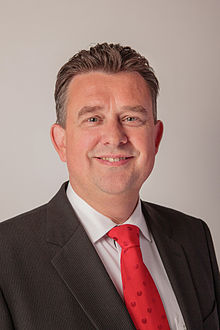
Acting Mayor Emile Roemer (SP)
Address: Geleenstraat 27, 6411 HP Heerlen, Netherlands
Phone: +31 45 560 5040
Postbus 1, 6400 AA Heerlen
e-mail: gemeente@heerlen.nl
Postcode: 6400–6433 Area code: 045
Website www.heerlen.nl
Twitter: Gemeente Heerlen @gemeenteheerlen
Facebook: Gemeente Heerlen @gemeenteheerlen
